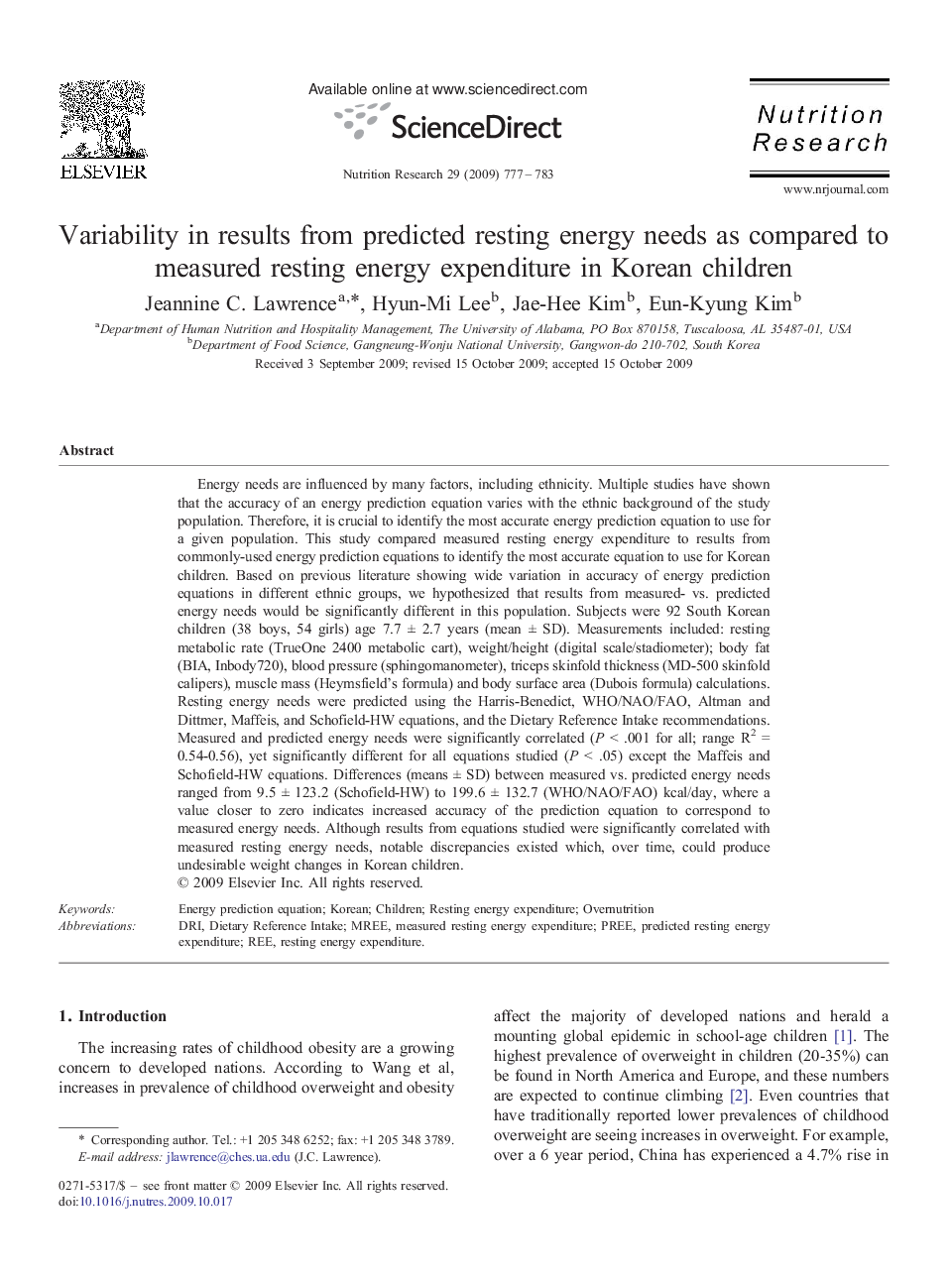| کد مقاله | کد نشریه | سال انتشار | مقاله انگلیسی | نسخه تمام متن |
|---|---|---|---|---|
| 2809502 | 1158052 | 2009 | 7 صفحه PDF | دانلود رایگان |

Energy needs are influenced by many factors, including ethnicity. Multiple studies have shown that the accuracy of an energy prediction equation varies with the ethnic background of the study population. Therefore, it is crucial to identify the most accurate energy prediction equation to use for a given population. This study compared measured resting energy expenditure to results from commonly-used energy prediction equations to identify the most accurate equation to use for Korean children. Based on previous literature showing wide variation in accuracy of energy prediction equations in different ethnic groups, we hypothesized that results from measured- vs. predicted energy needs would be significantly different in this population. Subjects were 92 South Korean children (38 boys, 54 girls) age 7.7 ± 2.7 years (mean ± SD). Measurements included: resting metabolic rate (TrueOne 2400 metabolic cart), weight/height (digital scale/stadiometer); body fat (BIA, Inbody720), blood pressure (sphingomanometer), triceps skinfold thickness (MD-500 skinfold calipers), muscle mass (Heymsfield's formula) and body surface area (Dubois formula) calculations. Resting energy needs were predicted using the Harris-Benedict, WHO/NAO/FAO, Altman and Dittmer, Maffeis, and Schofield-HW equations, and the Dietary Reference Intake recommendations. Measured and predicted energy needs were significantly correlated (P < .001 for all; range R2 = 0.54-0.56), yet significantly different for all equations studied (P < .05) except the Maffeis and Schofield-HW equations. Differences (means ± SD) between measured vs. predicted energy needs ranged from 9.5 ± 123.2 (Schofield-HW) to 199.6 ± 132.7 (WHO/NAO/FAO) kcal/day, where a value closer to zero indicates increased accuracy of the prediction equation to correspond to measured energy needs. Although results from equations studied were significantly correlated with measured resting energy needs, notable discrepancies existed which, over time, could produce undesirable weight changes in Korean children.
Journal: Nutrition Research - Volume 29, Issue 11, November 2009, Pages 777–783